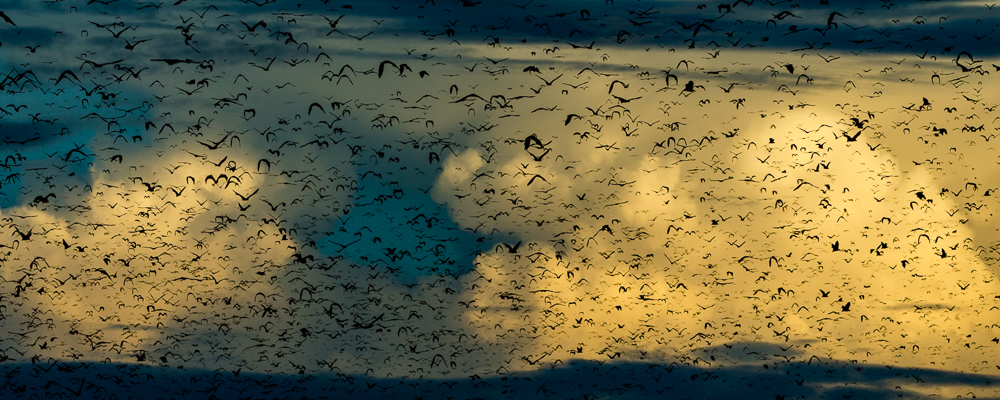
The Great Bat Migration
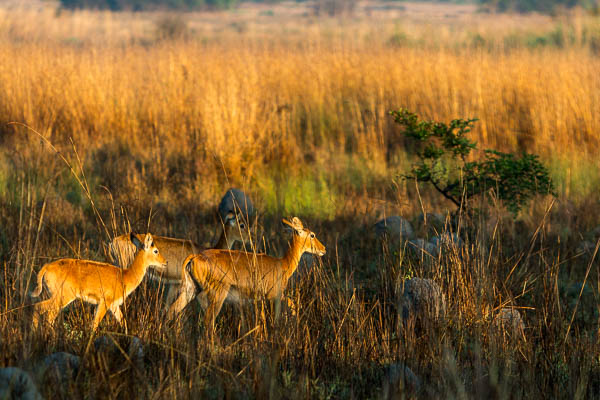
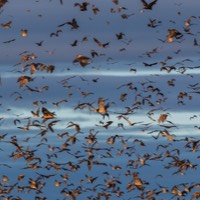
Kasanka National Park is a small park in central Zambia, measuring a mere 390 km squared This park was in danger of being lost forever until 1985 when a British expat, David Lloyd, took Kasanka to heart and spearheaded the efforts to preserve its unique wildlife and ecosystems.
Initially supported by donations and NGO's it became the first National park to be managed by a private body, the Kasanka Trust. The trust aims to sustain the park through tourism and attracts foreign investment. They are involved in partnering with the community in education, conservation farming and resolving elephant human conflict. The research for the chilli fences to keep elephants off crops was done here. While plagued by poaching and dwindling game numbers in the past, it now supports itself almost entirely on tourism revenue and a large part of this is generated by an incredible annual migration of straw coloured fruit bats.
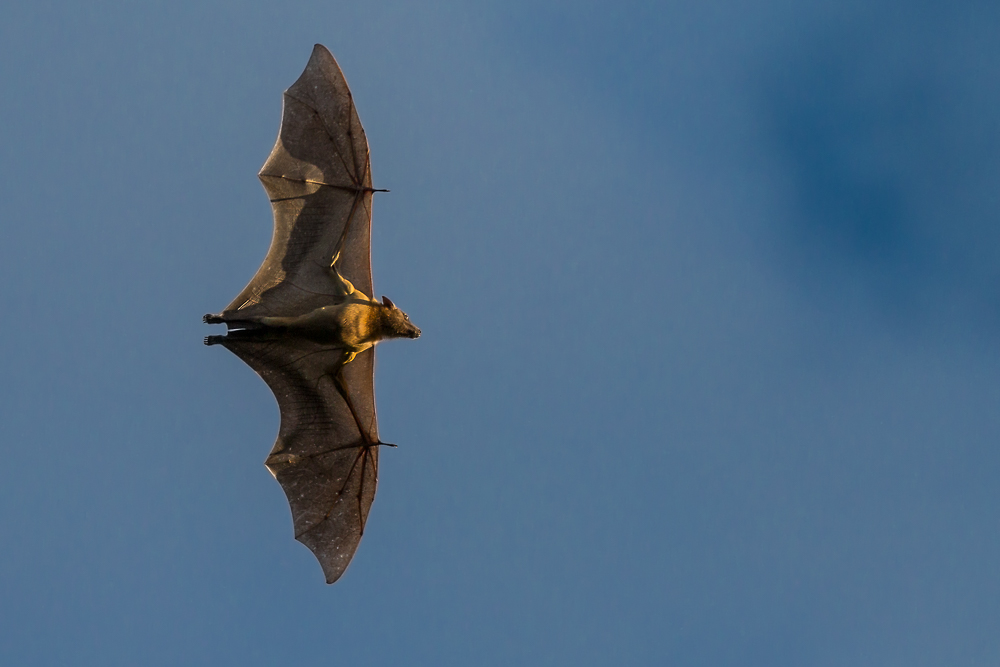
Kasanka National Park
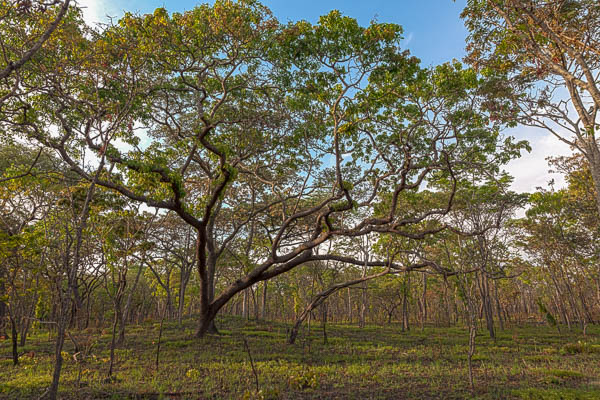
There are many different ecosystems within the park including large tracts of Miombo woodland
In 2010 BBC did a documentary on the bats which substantially increased public interest and this, together with the establishment of a number of viewing and photographic hides, including the BBC hide, around the bat forest, have kept interest and revenue alive.
Having heard all this we arrived in Kasanka after a long long hall from South Luangwa, via Lusaka, with high hopes. We were greeted warmly and it helped that the current manager hails from our own Howick! The park has options for accommodation including different lodges and a variety of camp sites. It is not cheap. I feel like a stuck record but it is the fact of life in Zambia. The park charges for entry $35 a day and then another $20 ppn camp fee.
There are several hides around the forest to facilitate the bat viewing. 2 areas are free but, predictably the rest are at a price and at $20 per person per visit to a hide it can cost us $80 a day for the hide access. Now we are up to $155 a day. This is still the cheap option however, the full package will again set you back $400 a day each. We had no bookings and arrived with some trepidation but they were able to accommodate us. The problem is that in bat season you want to be as close to the bat forest as possible. The roads are quite bad and the bats return from foraging very early so you will need to set out before you go to bed if you are stationed at the far reaches of the park.
The camps are small and isolated but there is a shade lapa in each one, I think more for rain than shade actually, and a camp attendent who brings wood and hot water. We met Gabriel who made our stay very comfortable with his cheerful and competent attention. It is quite a hard and lonely existance waiting for the next group to arrive.
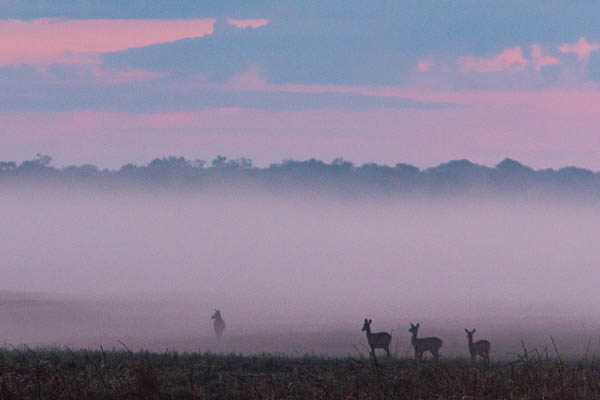
Large reedbeds and wetlands are also a feature of Kasanka.
We are not afraid of early mornings and we were in a camp about 30-40 minutes from the forest. We resigned outrselves to getting up at 3.00 am to get there in time. We made some bookings for the various hides. This migration is a wet season event, it is what the fruit trees like, and so it was with little surprise we found the weather there very uncertain. The problem with bats is they like rain about as little as we do. When getting up at 3.00 am there is no opportunity to gauge the weather and so it was hit and miss as to whether we had any golden light and more miss than hit for us on this trip. If the rain comes down heavily the bats disappear into the canopy.
Because of the expense you have to have some restraint and try and optomise your opportunities. We managed to make an appearance at all the hides (there are 4) at different times. We even left and returned 2 weeks later but there was no beating that rain. We had 1 day with a brief shining moment for golden light.
Not with standing the bats were amazing, mind blowing and mesmeric in all lights in terms of being there and seeing this incredible specacle. I cannot help hoping next time we will hit a weather window, just for a few hours. You see there will be a next time.
Batty for Bats

So whats so great about these bats I hear you say. Straw coloured fruit bats are part of a small furry group of megabats also known as flying foxes. They are large furry bats weighing up to 300g and with a wingspan of up to 80 cm. Presumably because of a period where insects were hard to find, they have evolved to eat fruit.
Their acute senses of smell and vision allow them to locate the fruit rather than using the echolocation of the more prolific insect eaters. Indeed they have the best vision of any bat. They bite into the fruit with small teeth and they have a long tongue which unrolls during feeding.
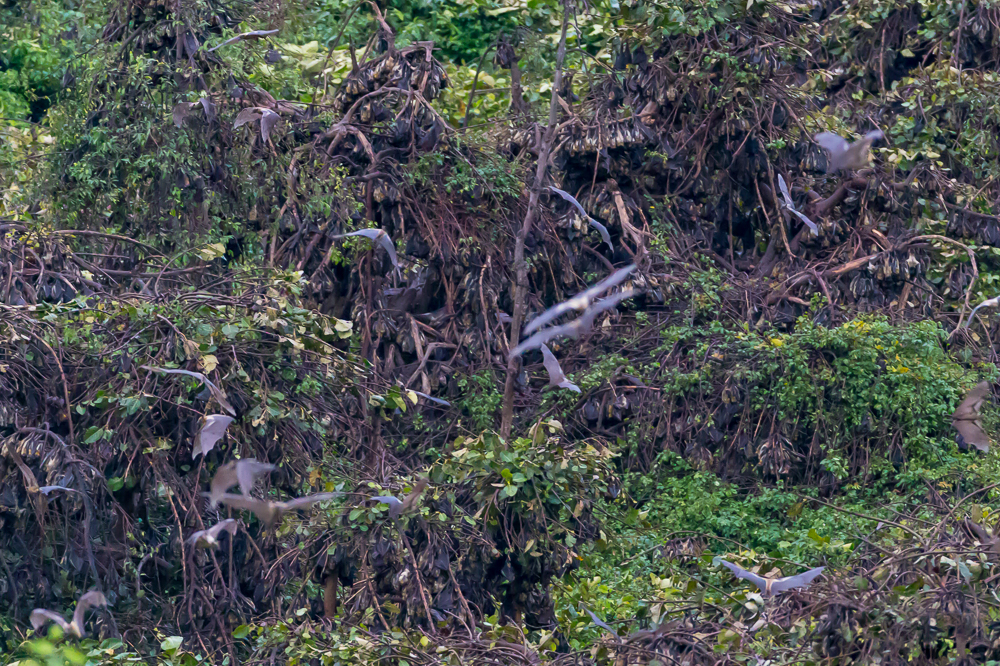
The long wings not only give a flight advantage but also cocoon the bat in a warm cloak to conserve heat when roosting. They live in large colonies because they feel safety in numbers. Mostly they live in warmer climates and can be found in numbers where fruit trees flourish and will travel long distances to find food.
They eat at night and roost during the day, usually high in trees or in crevices and dark places where they are protected from predators and they frequently stay close to water. In Kasanka the fish eagle and crowned eagle preys on them, as do crocodiles in the forest below. We really wanted to walk into the forest to witness this but it is not allowed
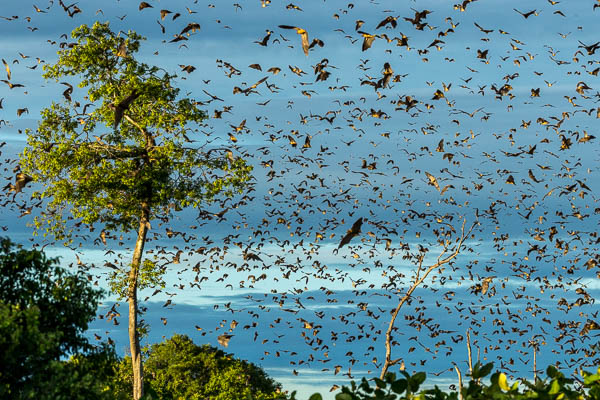
At dusk, almost on a timer, the bats begin to leave their roosts until the sky is black with their silouettes. At dawn they return, sated with fruit. They are important in the dispersal of seeds and propegation of their precious fruit trees.
They also bother the farmers somewhat and a fair amount of PR is needed to placate the local people. Imagine 10,000,000 bats landing on your mango tree! Education is an ongoing challenge.
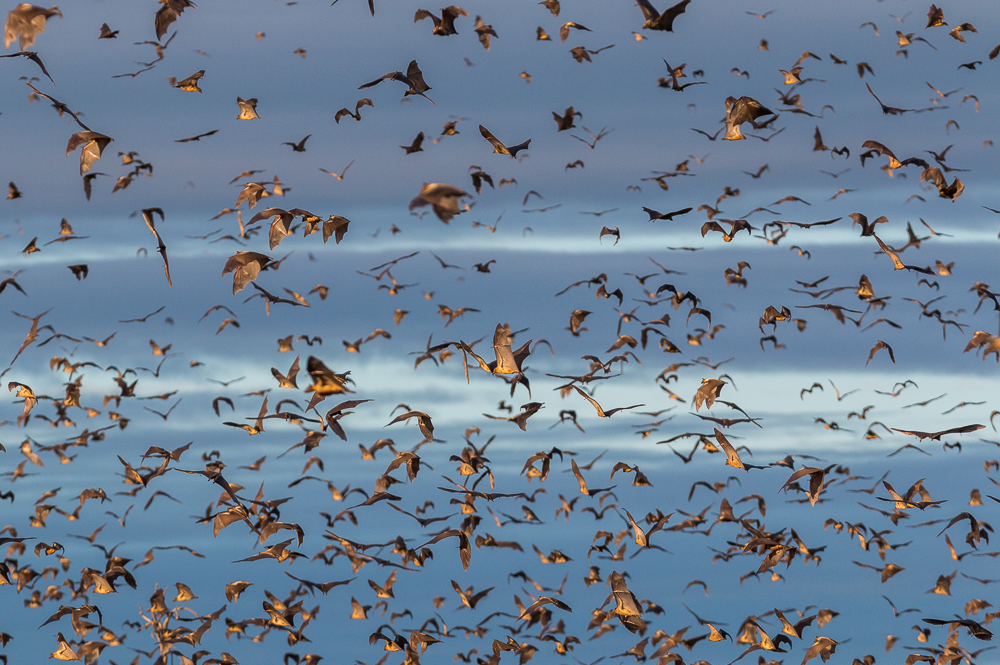
Between October and December every year, with the arrival of the first rains, over 10,000,000 straw coloured fruit bats descend on a small 10 hectare patch of Mushitu evergreen forest in the small reserve of Kasanka. These bats come from a wide area of Central Africa and the Congo to roost here in the largest mammal migration known. They come as part of a feeding migration for the seasonal fruiting of the trees, wild loquats and plums and waterberries, supplemented by the agricultural crops of mango and banana. Every evening they leave the roost to fly up to 140 km in search of food and every evening, replete with their juicy meal, they return to roost in the trees. This is one of natures best kept secrets and a wild life spectacle to behold.
One of the most amazing questions this natural specacle generates is why here? Why this little place in the middle of all the other habitats and parks in Africa.?
I am not sure anyone really knows the answer. They roost in a ridiculously small patch of forest with a stream running through it. The evergreen forests are high and the stream sets up air countercurrents which act like an air conditioner. This type of forest is on the decline because of fires and burning in Zambia (a national pastime) so this has become a fairly rare spot which may play a role. The Kasanka trust burns fire breaks and does everything it can to protect this little patch for the future but it is possible that it has a finite life span anyway. With the weight of the bats, the trees eventually break and fall. Anyway for what ever reason they return year after year and they create a wildlife spectacle unequalled anywhere else in the world. To give an idea of the numbers it is estimated that the biomass exceeds that of the wildebeest migration of the Serengeti and the Sardine Run off the South African east coast. Made famous by the BBC documentary the bats attract many tourists each year eager to witness this spectacle and we were no different.
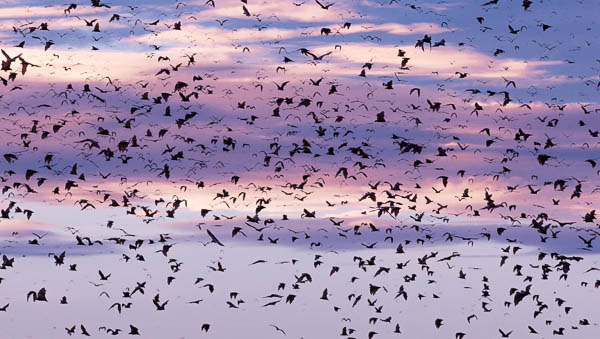
We opted for the free viewing spot the first night. In a grassy clearing there are wooden benches. This is positioned about 400 m south of the forest and this seems to be in the direction most of of the bats fly out. We were escorted by a guide with a gun because the access route is down a hippo path but we saw no sign of the hippos. He walked so fast that I am not sure he would have been much use if we did stumble on one but there you go. I am slow. We stared up into the clear blue sky straining for a sight of a bat to no avail and he sat pragmatically on the bench staring at nothing.
Just when you think they are not coming a few dots begin on the horizon, then a few dozen and then a few hundred until the sky is thick with a stream of little black shapes, swooping and soaring over your head. Little drops of moisture land on your upturned face. As this is probably bat urine it is best not to think too hard about it. They came out in unbelievable numbers for nearly an hour until the light faded and then they stopped just as suddenly and were gone. It was breath taking. We were entranced by the spectacle but disappointed in our photographs. We had taken wide angle lenses which did not do justice to the tiny creatures. We needed to be closer and longer.
Next stop was the lodge to achieve just that. We went to book the closest hide we could.
They have 2 south and 2 north. The paid hides are much closer to the forest. The general consensus seems to be South for evening and North for morning and we booked the BBC hide for the next day. You can imagine the BBC know what they are doing and as we crept down the path next morning before dawn you could hear the bats chirruping and squeaking in the trees around. We were right on the edge of the forest. Luckily we arrived at the hide in the dark. I say luckily because it is up a gigantic tree on a rickety ladder which looks like it is made of twigs and string. If I could have seen it I would probably have refused to go. You gingerly climb this only to find a platform and a second ladder up above the canopy. It is high. The view however was spectacular and we spent a happy hour with the bats flying in back to their roosts. The only problem was the light. The sky was overcast and not conducive to golden light pictures. We returned to all the hides many times. Sometimes alone and sometimes jostling on the rickety platforms with 8 others. We were seeking the red or golden sky as a background but we had grey drizzle 99% of the time. Occasionally we had to make a very precipitate descent of the ricketty ladders before we were washed off. Keeping the cameras dry was a concern. We had one evening when the sun peeked out briefly giving a taste of the golden light we knew could be found but it was brief, this is the rainy season after all and so you have to expect the inclement weather. In dull dark light the speed needed to capture the swooping bats without blur was hard to come by but we persevered with some success. Nothing that is worth doing will necessarily come easy. It is a magical wildlife phenomenon and we will be back.
Sitatunga And The Rest
The park has some unique habitats. A lot of reed beds and swamp lands and mixed Miombo forests as well as grassy plains.
Bird life is prolific. We met birders here on dedicated tours. You know when overlanding you tend to bump into the same people again and again and so it was with this trip. We stalked this particulalr little South African group all over the place.
They eventually warmed to us a little bit, we were plebs after all. They were on a more exclusive gig and seemed a bit put out when the bag people kept popping up. However they seemed to have a really rewarding stay in Kasanka. There are a lot of raptors here, not least because they prey on the bats. Also water birds. It is part of the Bangweulu swamp system.
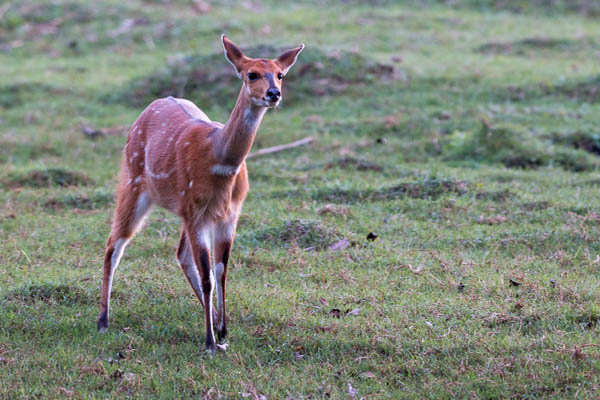
The other inhabitant which is worth a mention is the shy and elusive Sitatunga antelope. They look like a shaggy dark brown Nyala with long legs and a strange rocking gait, presumably developed to move through the challenging environment. This is the perfect environment for the Sitatunga, vast reedbeds where it retreats in knee deep water for the day and comes out to graze only for short periods at dawn and dusk.
Kasanka is probably one of the best places to see these beautiful creatures. The trouble for us is that when they were out and about we were generally teetering high above the ground on ricketty bat platforms.Oh well, we managed a few precious glimpses.
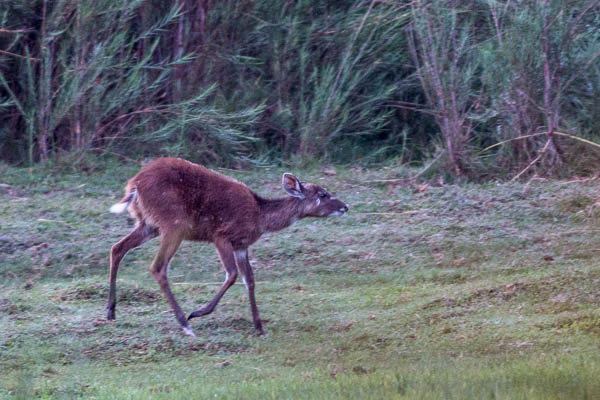
Because of the history of poaching, and possibly an ongoing problem, game is not abundent. They have a range of animals with small populations of elephant, buffalo, zebra and buck, especially puku and waterbuck and there is a pride of lion and some leopard. They do not lend themselves to photographic opportunities as such but they add to the beautiful landscape, Miombo forest and swamp lands.
Their baboon are almost unique in that they are shy and elusive creatures not yet habituated to people. As a result there is ongoing baboon research here and periodically we would see them tramping through the forest with binos and clipboards at the ready. Indeed biological research is a large part of the Kasanka landscape, multinational groups doing their PhD'S and Masters projects, especially all the batologists. No surprise there.
